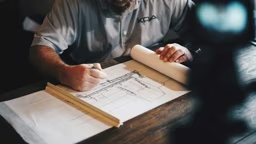
Since 1978, Wisconsin-based Edmunds & Company has been helping folks restore and repair older log homes around the country, and they have some great advice to share. Here are a few of their top home inspection tips when considering purchasing an existing log home or cabin:
1. Schedule a Site Visit
Have a site visit by a log home expert who has experience assessing the condition of logs as well as an in-depth understanding about the unique aspects of owning a log home.
See also 15 Old Log Home Inspection Essential Items
2. Check the Flashing
Assess the flashing used between attached decks. This can be a problematic area for log homes, if the flashing was not done correctly.
3. Take a Look at the Roof
Make sure the roof overhangs are sufficiently deep enough to protect the logs from the weather (18 inches to 2 feet is ideal).
4. Think about Rain Water
Take note if the log ends (crowns) extend beyond the roof line where they can catch water coming off the roof. There may be problems with rot either now or in the future.
5. Ask About the Stain
If possible, find out what kind of stain has been used on the exterior logs and if it has been properly maintained over the years.
6. Make Sure There is No Rot
Look for large (wider than 1/16 of an inch) cracks on the upside of the logs that are not caulked. This can allow moisture to penetrate the log and travel to other logs, causing damage and, perhaps, rot.
See also Inspection Checklist For Buying a Used Log Home
7. Keep an Eye Out for Insect Damage
Look for signs of wood-boring insects such as carpenter bees. They don’t eat the wood — they excavate it to build their nests. Tell-tale signs are uniform holes about the size of a dime with piles of sawdust beneath the opening, and yellow/brown stains caused by excrement they deposit below these entry holes.
Log homes can last for generations, provided they have been faithfully maintained. The more you know about what it takes to properly maintain a log building, the more you can make an informed decision before you invest in the unique beauty of a log structure.
Adapted from advice shared in the Log Home Neighborhood, an online community of log home owners, enthusiasts and professionals. For more great tips, visit loghomeu.com.











